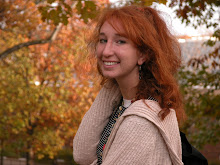Screen, Stage and Back to Screen:
Federico Fellini’s "8 ½" comes back as Rob Marshall’s "Nine"
According to Rob Marshall’s film adaptation of "Nine" an Italian man’s life is riddled with passion, depression and complicated relations with (multiple) women. Dazzling musical numbers are paired with dramatic relationships to make the film more of an artistic show than an emotional ride.
"Nine" begins as Italian superstar director Guido Contini (played by an endearing Daniel Day-Lewis) attempts to reignite his career. However, he delays his script-writing by fantasizing about his personal life and reminiscing about his past.
Ultimately, "Nine" is the story of a man and his women—the women who tempt him and guide him, his inspirations and downfalls. The women in Contini’s life include an all-star female cast of his wife (Marion Cotillard), his mistress (Penélope Cruz), his muse (Nicole Kidman), his enthusiastic fan (Kate Hudson), his voice of reason (Judi Dench), his mother (Sophia Loren) and his childhood teacher on temptation (Fergie.)
The plethora of female sensations (each with an Oscar, or at least a nomination, under her belt) makes it hard to separate the actress from her off-screen identity. On the other hand, Daniel Day-Lewis plays into the distinct Italian charm of his character: a half smile with warm eyes, running fingers through his hair and restlessly smoking cigarette after cigarette. It’s hard to dislike a man who depends on a sharp-witted Judi Dench for advice and carries a deep affinity for the comforting, motherly, and still sexy Sophia Loren.
Despite, or due to, the many relationships throughout the film, there is no central love story. "Nine"’s previous success as a Broadway musical could get away with neglecting emotional connections, but in a film an audience expects some romance. (Especially after seeing most of the female cast as spectacular romantic leads in other films i.e. Nicole Kidman in Moulin Rouge.) Even though it is evident that Contini’s true love is his career, the limited screen time for each actress leaves one wanting more from their relationships with him.
Individually the emotive song and dance pieces were captivating, yet they lost their poignancy when interspersed with the real time scenes. The poor editing between the two types of scenes makes the viewer feel a little empty, unfulfilled, and not quite immersed in the film. It seems like a waste to hire professional dancers only to cut out the majority of their performances. Similarly, it’s a shame to cut out an actor’s expression for a view of Kate Hudson’s sparkling rear end. In the end, the editing needed to be as captivating as the two scenes that it melded together.
Perhaps the strange melding has to do with "Nine"'s original form, Otto e Mezzo (81/2), the innovative autobiographical work of the 1960’s Italian director Federico Fellini. In his time, the film’s smooth flow from fantasy to reality was a new concept which went on to influence other film makers. Now that Fellini’s technique has been played out over again and again, it’s difficult to appreciate the free-flowing mix of fantasy and reality in "Nine."
As for artistic direction, "Nine" shines for its ability to make every shot “like a postcard,” (as said by Kate Hudson’s character about Contini’s movies.) Each scene is colored to reflect a mood and evoke a feeling as well as a sense of place. The storyline in the present is portrayed in normal cinematic style, which contrasts nicely with the past blurry black and white of the past. The scenes in Contini’s imagination include impressive cabaret style musical numbers which are all glittery costumes and lively dancing (and appropriately dark when necessary.) The visual chaos of light, color and movement create an artistically pleasing representation of Contini’s mind.
Throughout its evolutions, from film to musical and back to film, Federico Fellini’s original story lost its ingenuity, yet managed to salvage some artistic impact. Due to its chaotic nature and reliance on musical numbers, "Nine" works best on today’s colorful stage and yesterday’s silver screen.
22 Jump Street (2014)
10 years ago

I think your changes really boosted this article's readability and informative power. You incorporated good facts about the various actors and had good insight on how their other romantic roles really make this film's romantic storyline fall flat. I think you make some bold claims in the piece that you back up well, though some of your explanations get a little wordy, and I feel that at times I lost your train of thought in the review. I also think your conclusion was very succinct, saying what could take a couple hundred words to say in very few.
ReplyDelete